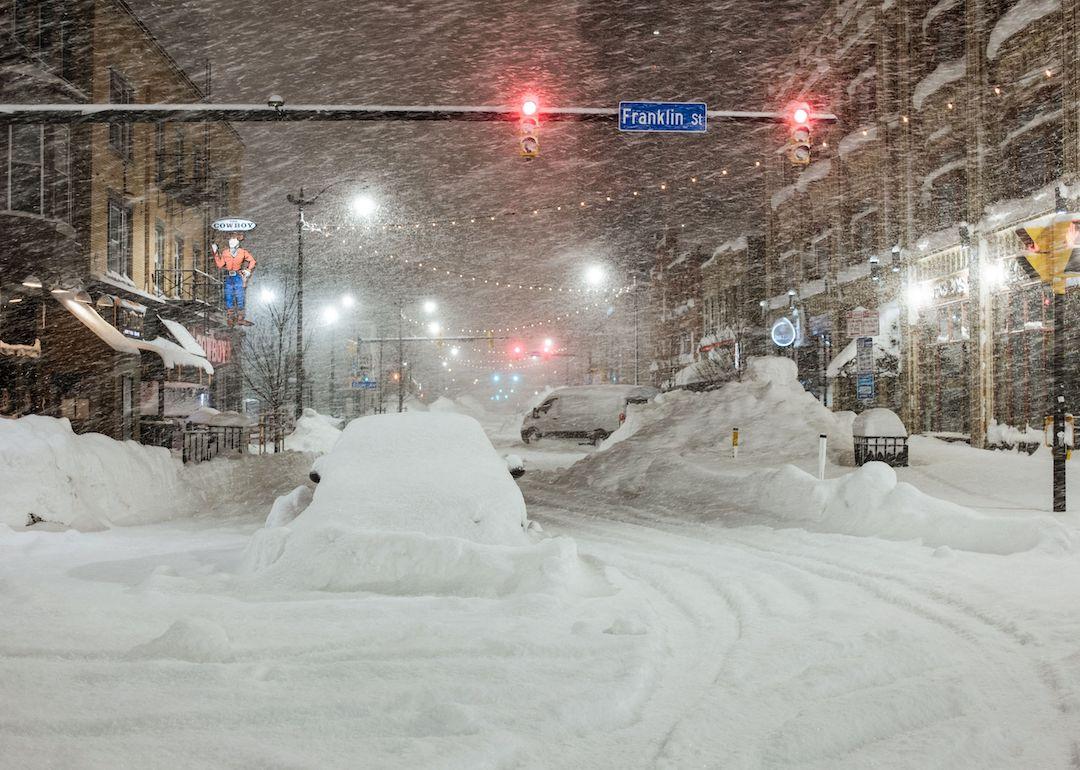
20 of the most destructive winter storms since 1980
20 of the most destructive winter storms since 1980
Catastrophic weather events can follow predictable meteorological models, but the difference between rain and snow can be razor-thin. When such events—especially winter storms—occur in remote areas, in states with traditionally warm temperatures, or spring up out of season, the results can be disastrous and expensive. States like Minnesota, Wisconsin, New York, and the Dakotas are accustomed to harsh cold weather conditions, but southern states like South Carolina and Florida tend to be wholly unprepared when ice, sleet, and snow strike.
For proof, you need look no further than the January 2025 storms that brought plunging temperatures and unexpected snowfall to states like Louisiana and Texas. Two hundred miles of Interstate 10 closed in Louisiana as a result, leaving almost the entire highway shut down from east to west. In December 2025, storm clouds are once again gathering on the horizon for the South, with a polar vortex expected to bring particularly cold weather to South Carolina, Georgia, and many more states across the country. The rest of the 2025-26 winter could offer some relief, though, as the National Weather Service predicts warmer, drier conditions across the majority of the country.
However, this winter will almost certainly see further major storms, just as in winters past. To establish the most destructive winter storms in recent history, Stacker consulted the National Oceanic and Atmospheric Administration's Billion-Dollar Weather and Climate Disasters database from 1980 to November 2023 to rank storms according to the inflation-adjusted cost of the event. Winter storms may include multiple events across different National Weather Service zones.
While the NOAA's database is comprehensive, damage reports often come from local sources and may, therefore, be incomplete. Still, the following list contains harsh winter weather of every variety—ice storms, blizzards, frosts, freezes, heavy snow, sleet, and combinations thereof.
Read on to learn where and how winter storms have caused the most damage this century.
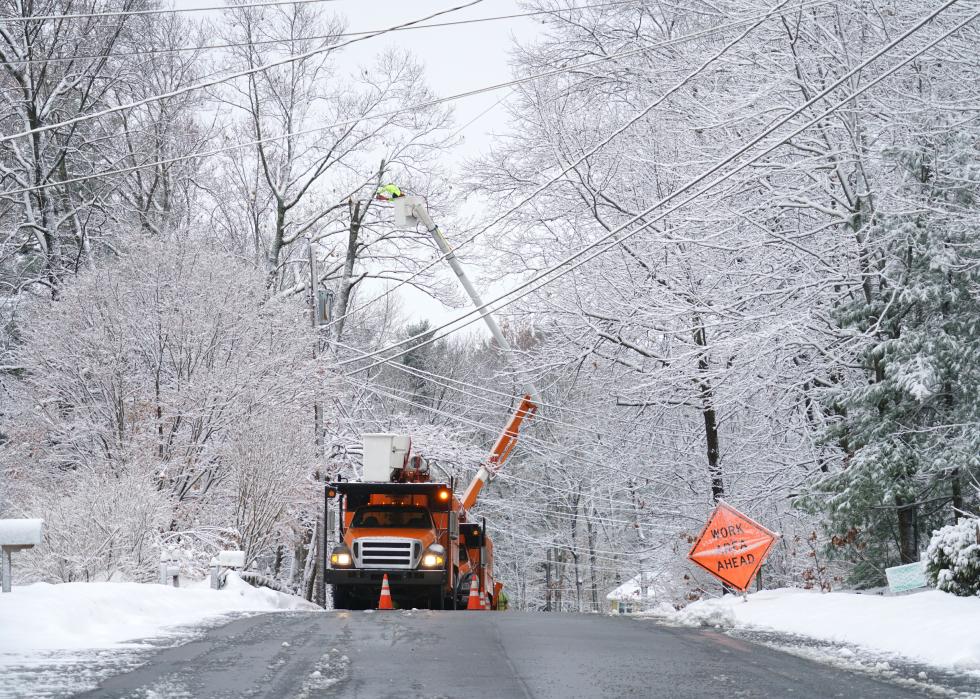
#20. Jan. 21-24, 2000
- Total damage: $1.3B
- Deaths: 4
- Regions most impacted: Southeast
A surprise snowfall caused disruptions in several southeastern states, including North Carolina, according to the Billion-Dollar Weather and Climate Disasters database. Computer models in the days leading up to the storm did not predict any concerning weather, and "many of them did not predict any winter precipitation at all," ABC reporters in the Raleigh-Durham newsroom recalled.
The snow—which fell at about 4 inches per hour—accumulated in 16- to 20-inch piles in some areas, blocking roads and canceling normal activities. The atypical storm is seared in North Carolinians' memories: "It's something I'll never forget and probably will not see for the rest of my career," ABC11 photographer Paul Furr said.
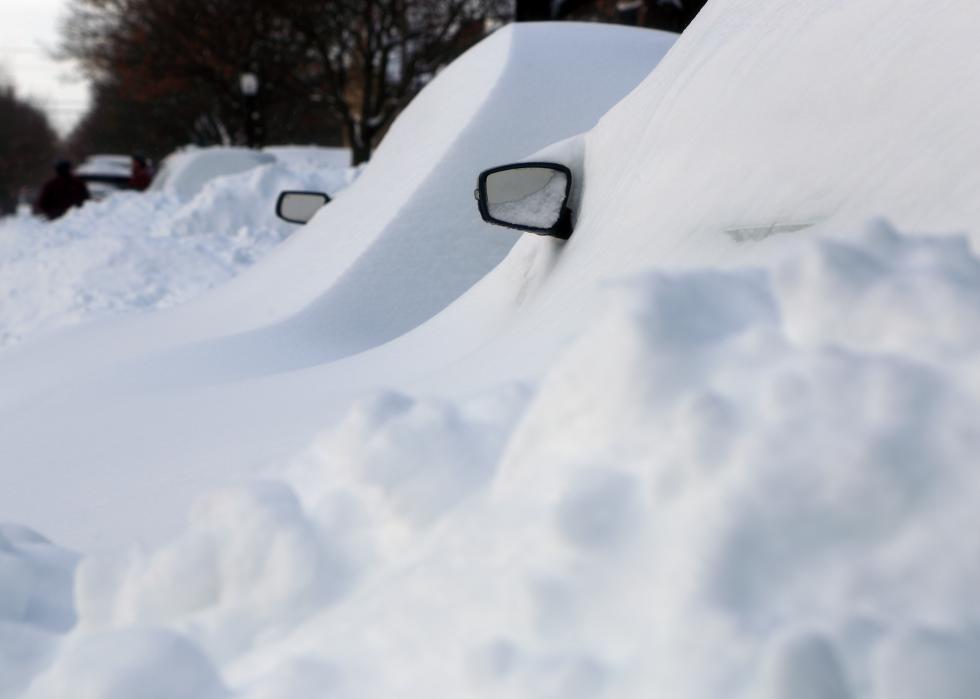
#19. Jan. 3-5, 2018
- Total damage: $1.3B
- Deaths: 22
- Regions most impacted: Eastern U.S.
A powerful winter storm hit in the first week of 2018, causing power outages, flooding, and delays along the East Coast. On Jan. 3, it caused snow in Tallahassee, Florida—the city's first snow in three decades—then headed north. With winds of up to 50 miles per hour, it plowed through other East Coast states, leaving several inches of snow in its wake. In Boston, high tides meant water flooded parts of the city.
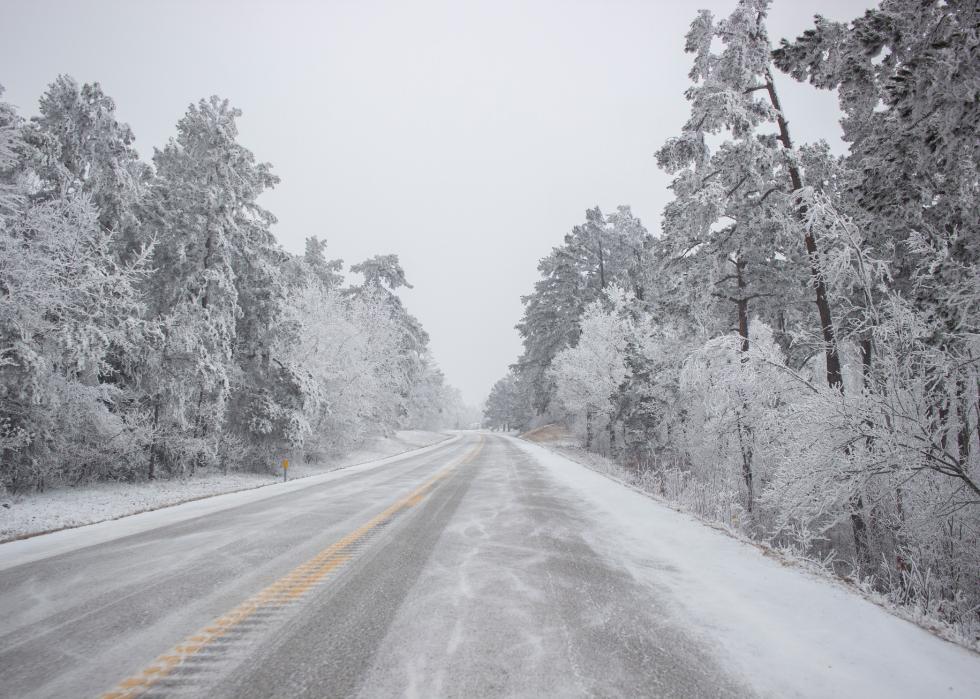
#18. Jan. 13-16, 1999
- Total damage: $1.6B
- Deaths: 0
- Regions most impacted: Central and Eastern U.S.
An unusual pattern of participation resulted when a cold front moved through the Northeast and was followed by a high-pressure system in northern New England, which encountered a weak low-pressure system coming from the Tennessee River Valley. The collision caused a rapid drop in temperature in some areas. In New Jersey, that meant temperatures dropped from the 50s to the 20s in just a few hours. Alternating sleet, freezing rain, rain, and snow over the three days created an unpredictable mix. Snowfall totals from Ohio and West Virginia all the way up to Maine ranged from less than 2 inches to 18 inches.
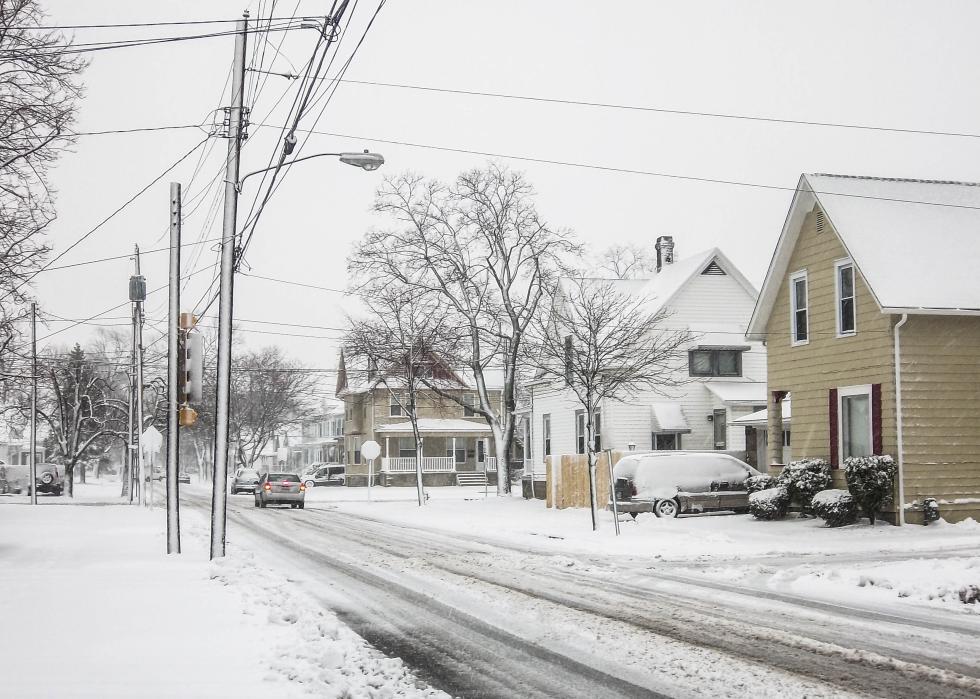
#17. Dec. 21-26, 1989
- Total damage: $1.7B
- Deaths: 100
- Regions most impacted: Eastern U.S.
Even southern states experienced a rare "white Christmas" in 1989. The storm broke snowfall records in several cities, including Wilmington, North Carolina, with 15.3 inches of snow; Charleston, South Carolina, with 8 inches of snow; and Savannah, Georgia, with 3.6 inches of snow. While some in Wilmington waxed poetic at the rare piles of white stuff, others pointed out the destruction it left behind. The dayslong event was like a "rude guest overstaying his welcome," reporter Alison Feldman wrote in the Wilmington Morning Star. In addition to the human casualties, reports indicated the northern Florida citrus industry faced near "total destruction."
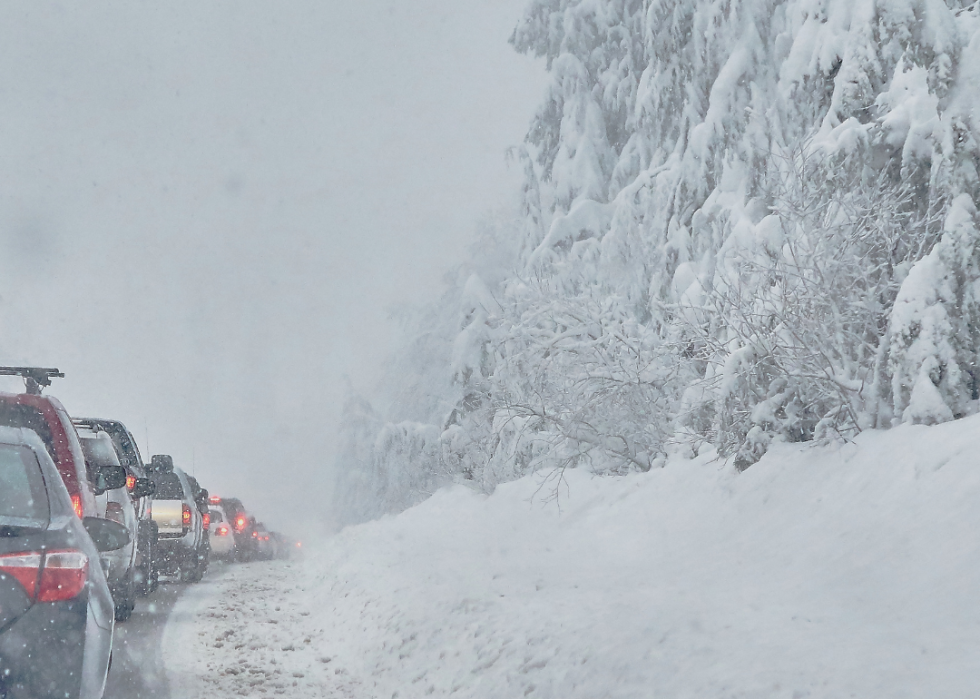
#16. Feb. 2-5, 2023
- Total damage: $1.8B
- Deaths: 1
- Regions most impacted: New England, mid-Atlantic
Dangerously low temperatures, canceled flights, and power outages followed strong winds and a polar vortex in early February 2023. On Feb. 3, instruments on Mount Washington in New Hampshire identified the coldest wind chill ever recorded in the U.S. at minus 108. The temperature at that same location was minus 47.
One day later, Boston recorded a new record low temperature of minus 10.
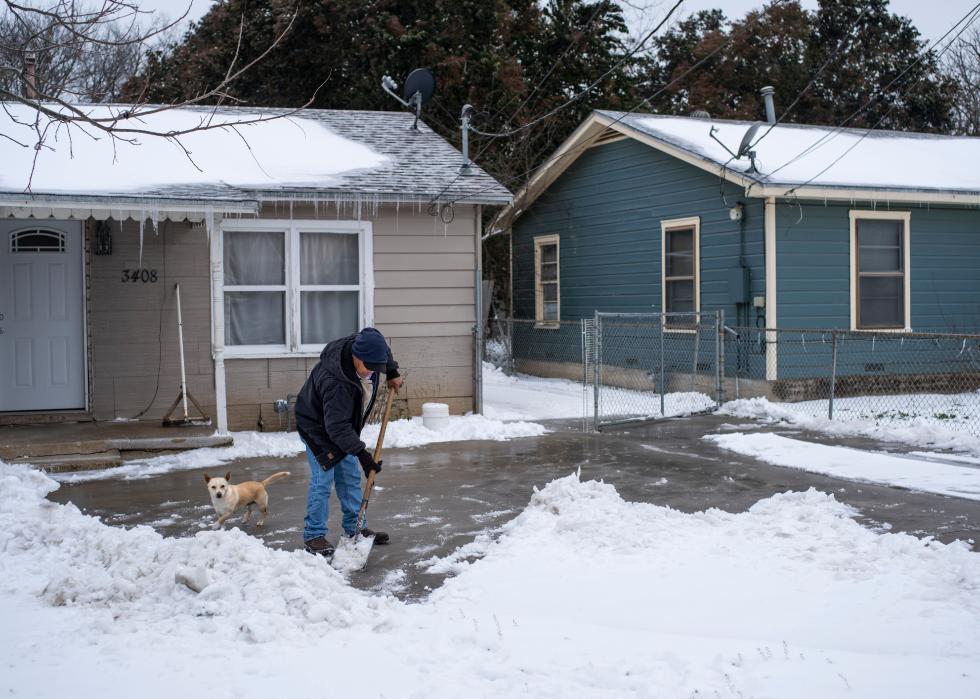
#15. Jan. 1-4, 1999
- Total damage: $1.9B
- Deaths: 25
- Regions most impacted: South, Southeast, mid-Atlantic, and New England
The New Year's "Monster" snowstorm of 1999 made many rural roads impassable for several days, and the pileup of heavy snow caused roofs to collapse. Schools and some businesses were closed for up to two weeks following the storm. Several local weather stations reported record-breaking snowfalls, too, including 18 to 24 or more inches in northwest Indiana and southwest Michigan. Sleet and freezing rain came immediately after the snow in some regions, further complicating recovery.
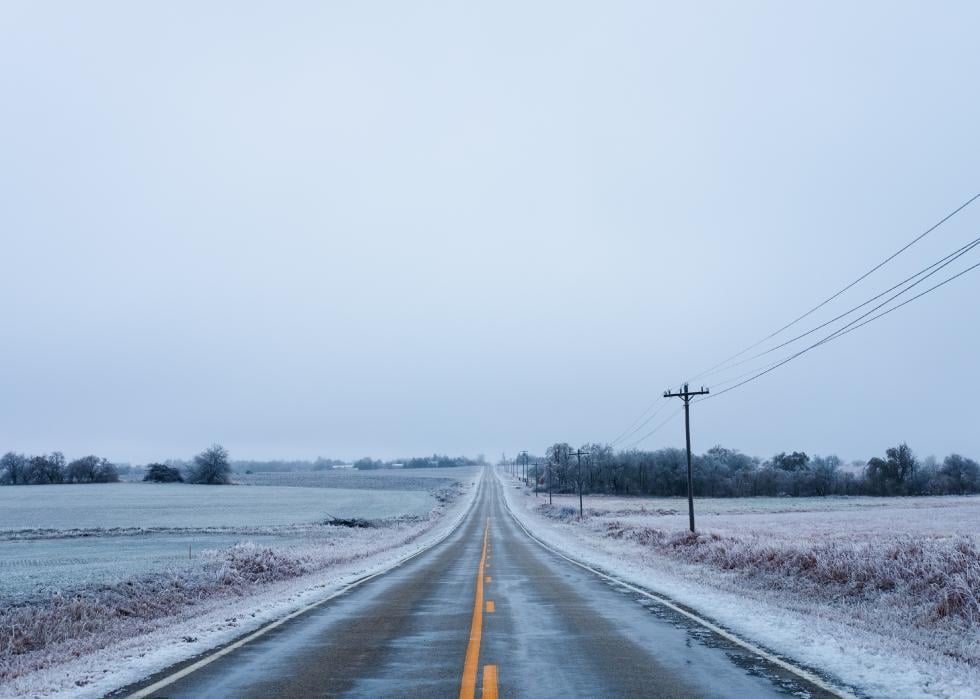
#14. Jan. 8-16, 1982
- Total damage: $2.2B
- Deaths: 85
- Regions most impacted: Midwest, Southeast, mid-Atlantic, and New England
Numerous states were impacted by what some call "Snow Jam '82." Atlanta residents recalled abandoning their cars on snow-covered highways and seeking shelter as the city was smothered by four inches of snow, freezing rain, and sleet.
"No one can ever remember it happening before," reporter Clem Richardson wrote in the Atlanta Journal-Constitution. "At one point during the storm (yesterday), officials said nearly all of Atlanta's 1,425 miles of surface streets plus 200 miles of interstate highway were jammed to a halt."
In St. Louis, where more than 20 inches of snow fell, forecasters called it a 1-in-70-year snowstorm.
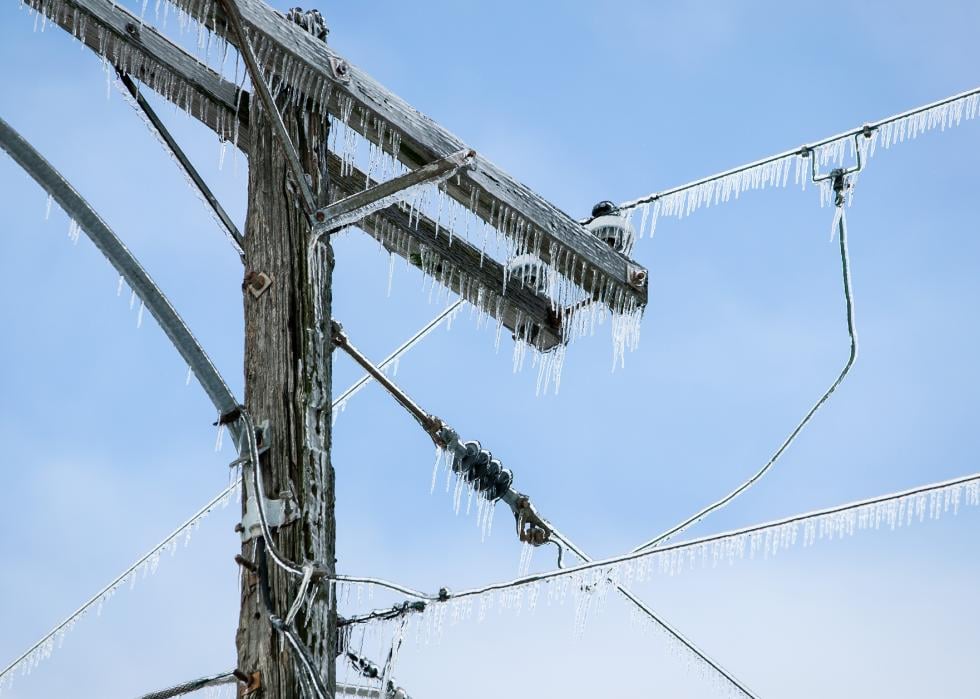
#13. Jan. 17-20, 1994
- Total damage: $2.2B
- Deaths: 70
- Regions most impacted: Southeast and mid-Atlantic
A weekslong cold snap crescendoed around Jan. 19, 1994, when many areas recorded all-time-low temperatures. Temperatures reached minus 22 in Louisville, Kentucky, and minus 18 in Jackson, Mississippi. Rolling blackouts occurred throughout the mid-Atlantic states as power companies rushed to restore service.
In New York and New Jersey, residents froze to death when they locked themselves out of their homes or became stranded in their cars. Others were hospitalized for frostbite. Long Island firefighters battled a multihouse fire and explosion caused by gas leaking from an underground pipe and being unable to escape through the frozen ground.
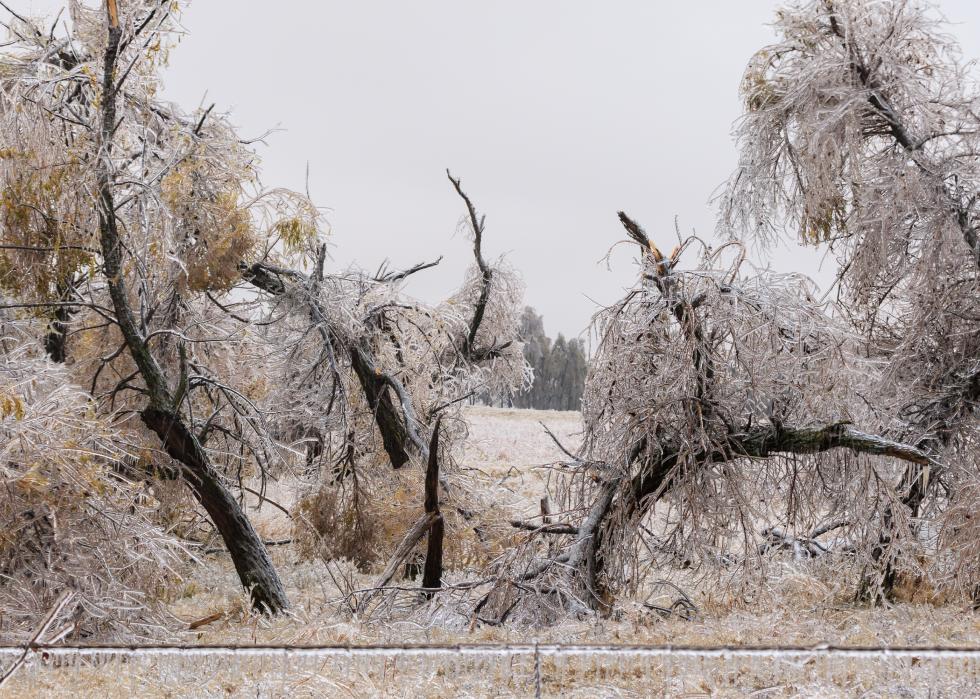
#12. Jan. 19-22, 1985
- Total damage: $2.4B
- Deaths: 150
- Regions most impacted: Every state east of the Rockies
Then-President Ronald Regan's inauguration parade for his second term was canceled during this "freeze of the century." Some southern states reached all-time record low temperatures and some cities reported monumental electricity usage, as residents attempted to stay warm by blasting their space heaters. According to the National Weather Service, "Firefighters faced the unusual problem of their water hoses freezing while attempting to fight fires."
Meanwhile, in Chicago, where temperatures plummeted to minus 27, city employees received 2,000 phone calls from residents who could not stay warm in their own homes, according to CBS.
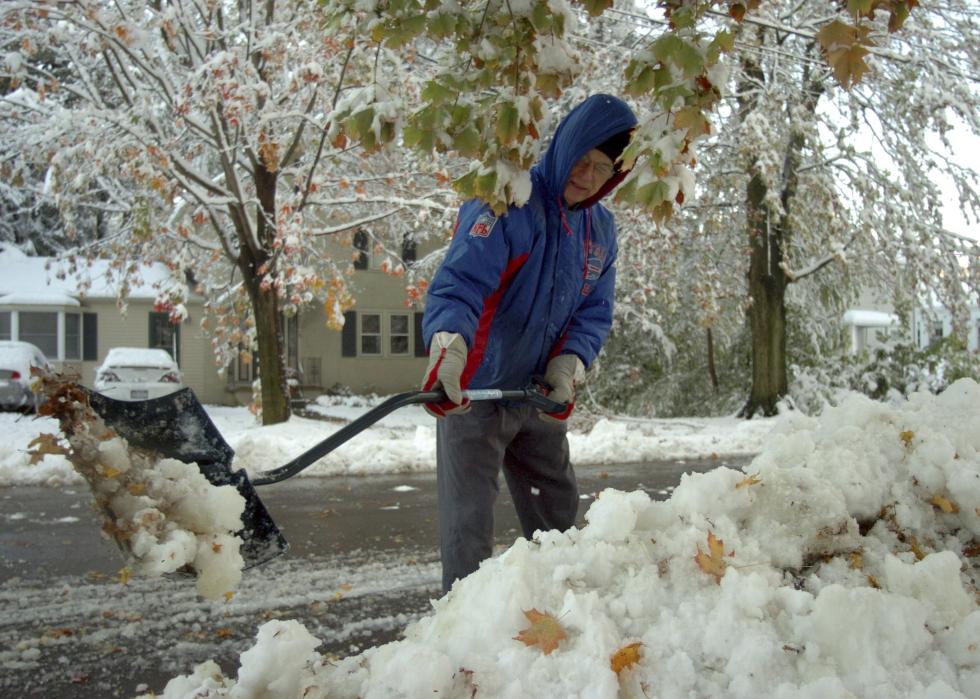
#11. Feb. 1-3, 2011
- Total damage: $2.5B
- Deaths: 36
- Regions most impacted: Southern Plains, Midwest, mid-Atlantic, and New England
A massive snowstorm gained strength in Texas on Feb. 1 and moved northeast to include a large band of states extending to parts of New England. Twelve to 18 inches of snow paired with winds of 30-40 mph created blizzard conditions in parts of Oklahoma, Wisconsin, and Michigan. Despite winter storm warnings, hundreds of drivers became stranded in whiteout conditions.
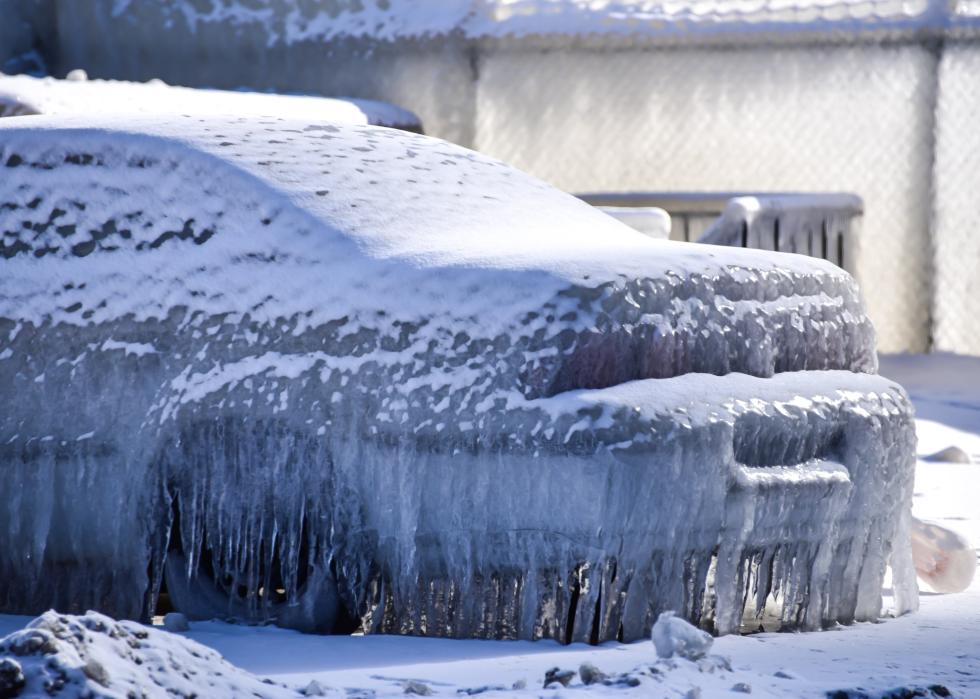
#10. Jan. 5-9, 1998
- Total damage: $2.7B
- Deaths: 16
- Regions most impacted: mid-Atlantic and New England
A strong El Niño pattern led to what the National Weather Service has called the "Devastating 1998 Ice Storm." As much as 4 inches of ice caused property damage, downed trees, and power outages, affecting millions.
"However, a very large majority of injuries and fatalities with this storm were caused by human, 'indirect' sources that are largely preventable," meteorologist Scott Whittier wrote for the National Weather Service. "These sources include vehicle accidents, carbon monoxide poisoning, electrocution from touching downed electrical wires during storm clean-up and other injuries resulting from [post-storm] clean-up."
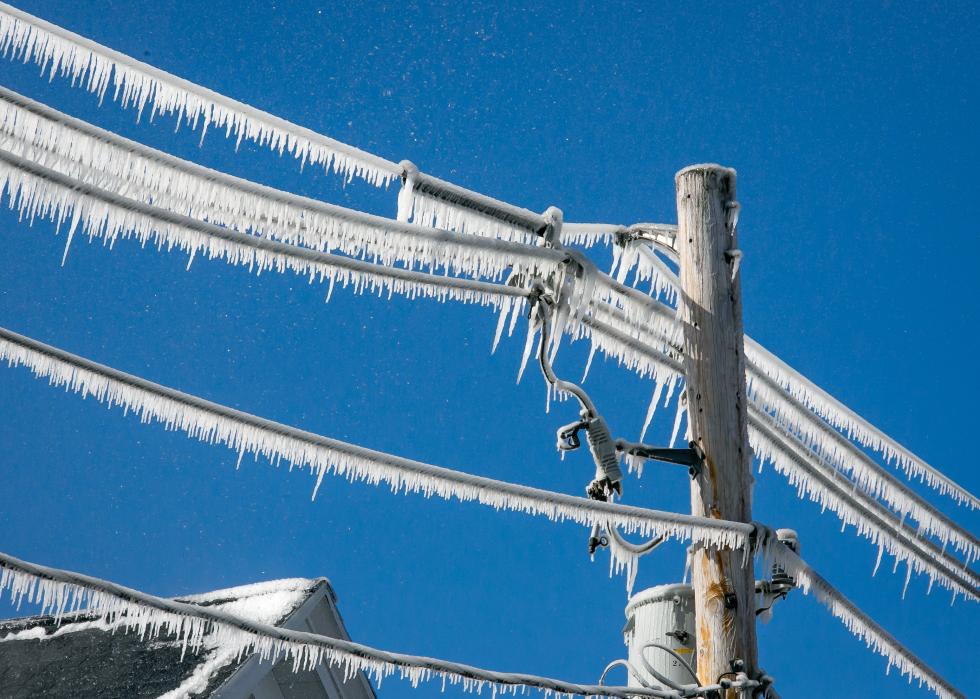
#9. March 1-3, 2018
- Total damage: $2.7B
- Deaths: 9
- Regions most impacted: mid-Atlantic and New England
After first delivering snow to the Upper Midwest in the last days of February,
Winter Storm Riley became a nor'easter that walloped New England. Damaging winds knocked out power across several states, affecting 1.9 million homes, according to The Weather Channel.
Four Massachusetts areas saw wind blasts of 90 mph or more, and coastal flooding caused hazardous conditions in shore towns. Richmondville, New York, west of Albany, counted 40 inches of total snowfall, and many other areas saw at least 2 feet of snow.
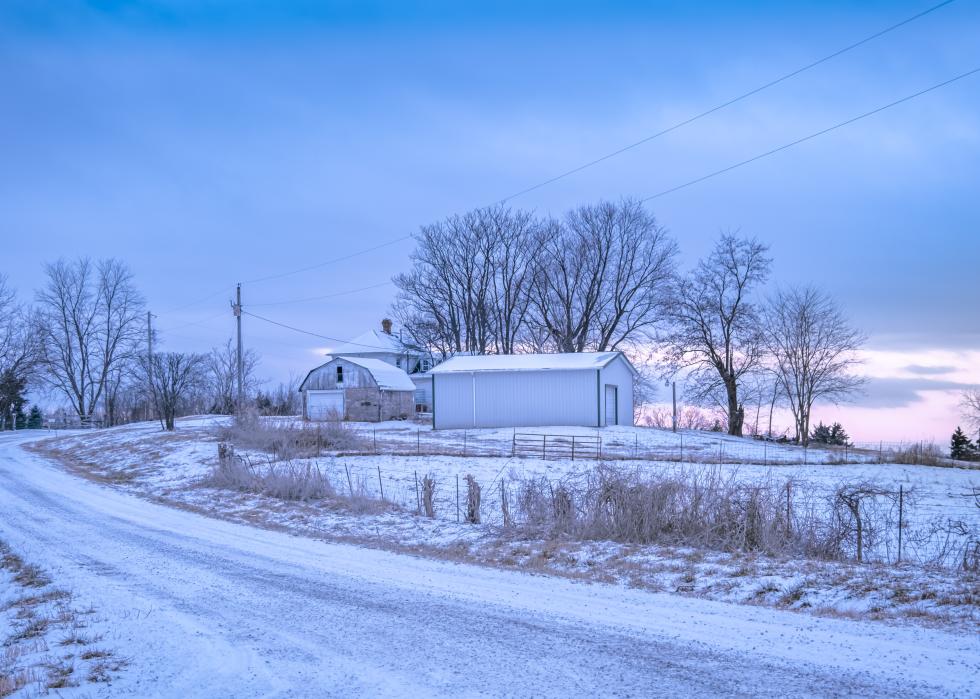
#8. Jan. 5-8, 2014
- Total damage: $2.9B
- Deaths: 16
- Regions most impacted: Midwest
The early 2014 polar air blast made even the toughest Midwesterners go into a "virtual hibernation," according to a CBS News report. Forecasters estimated about 187 million people experienced the intense cold snap and travelers saw their flights delayed up to a week.
In Minneapolis, temperatures reached minus 23 and wind chills of minus 48, while schools and businesses across the Midwest closed. The polar blast's casualties included a 1-year-old boy who was in a car that collided with a snowplow in Missouri.
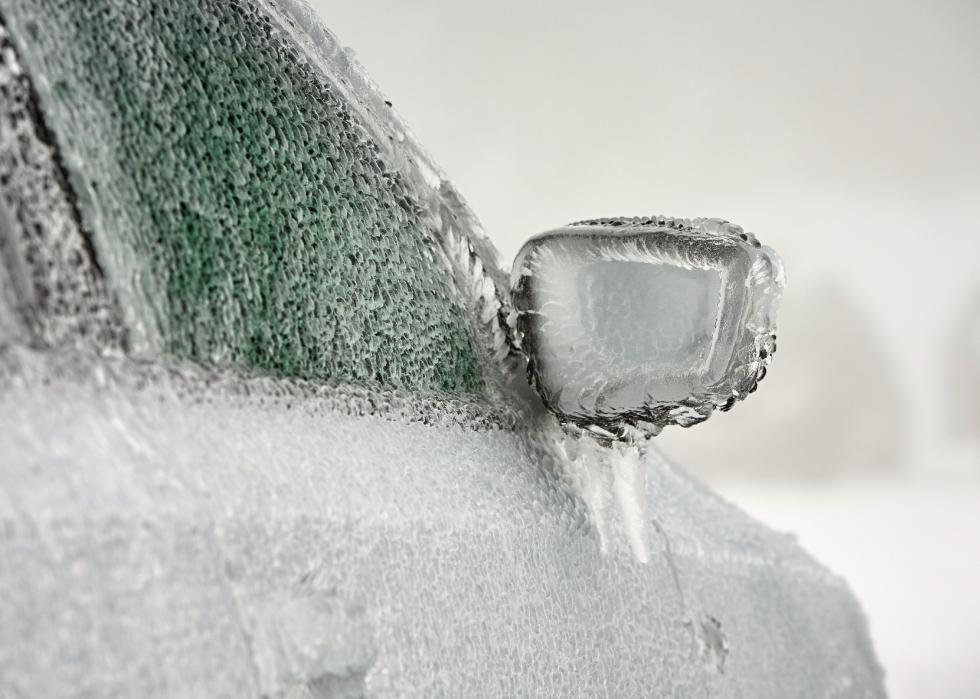
#7. Feb. 14-20, 2015
- Total damage: $3.9B
- Deaths: 30
- Regions most impacted: Central and Eastern U.S.
A frigid air mass that started in Siberia in Russia crossed over the North Pole and then made its way into the U.S. It brought record-breaking low temperatures; at least 72 daily record lows were set on Feb. 20 in cities all the way from Connecticut to Florida, according to The Weather Channel.
"Boston was particularly impacted as feet of snow continued to accumulate causing load-stress on buildings and clogging transportation corridors," according to NOAA.
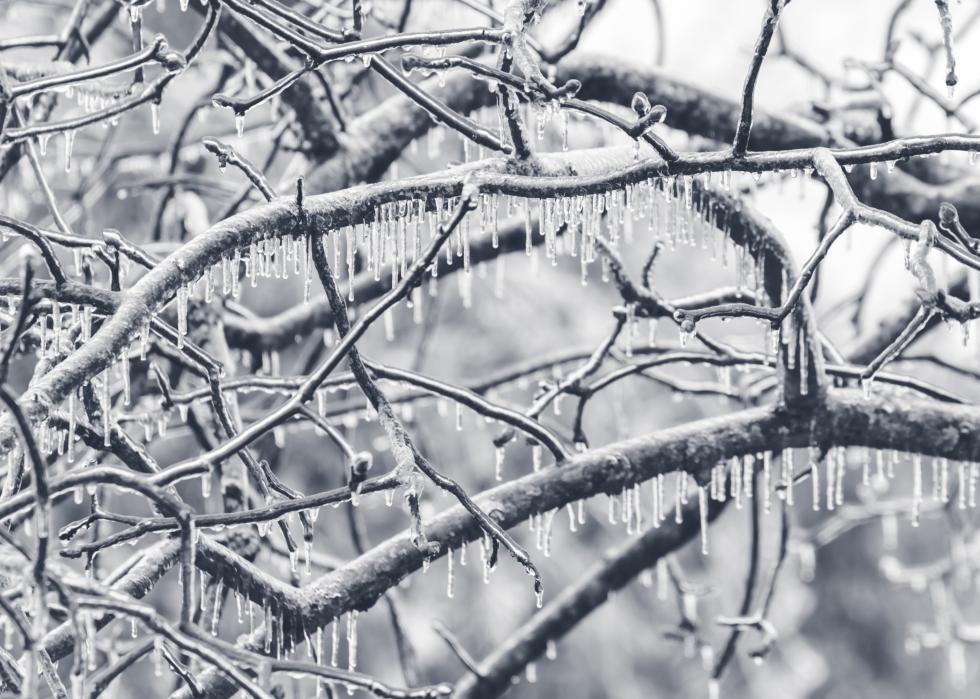
#6. Dec. 10-13, 1992
- Total damage: $5.4B
- Deaths: 19
- Regions most impacted: New England, mid-Atlantic
A nor'easter that brought sustained winds of 20 to 30 mph—and one recorded gust of wind at 80 mph—caused damage across Connecticut, Delaware, Maryland, Massachusetts, New Jersey, New York, Pennsylvania, Rhode Island, Virginia, and West Virginia. In New York and Boston, 4 to 5 feet of water flooded some areas, and in just 24 hours, 27 inches of snow fell west of Boston.
Officials reported one 38-year-old woman dying from multiple blunt force injuries after the roof of a nearby apartment building blew off and crushed her; others died trying to escape rising waters.
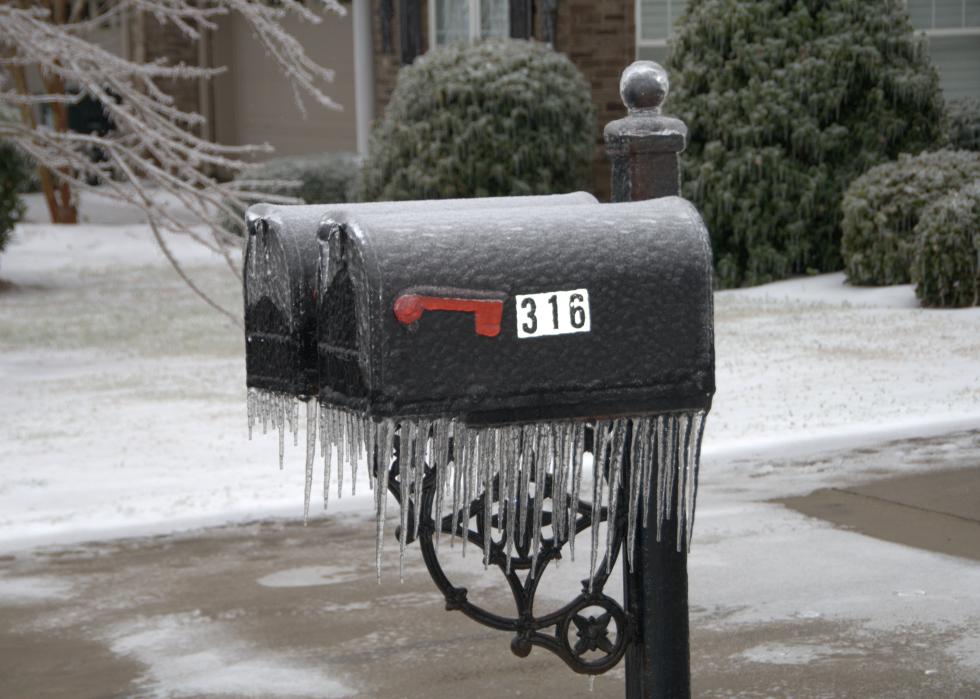
#5. Jan. 1-31, 1996
- Total damage: $6.0B
- Deaths: 187
- Regions most impacted: New England, mid-Atlantic
Following a government shutdown that furloughed most federal employees, many of whom worked in Washington D.C., a major nor'easter slammed the eastern seaboard with snow, crippling D.C. and numerous other cities. All major D.C. roads were closed through Jan. 7, and only through multilevel government coordination were all roads finally able to open up by Jan. 17.
"The sudden warm-up that followed proved to be almost as deadly and damaging as the blizzard itself," National Climatic Data Center scientists reported.
Melting snow triggered major flooding, killing 33 people and forcing another 200,000 from their homes, as well as damaging hundreds of buildings.
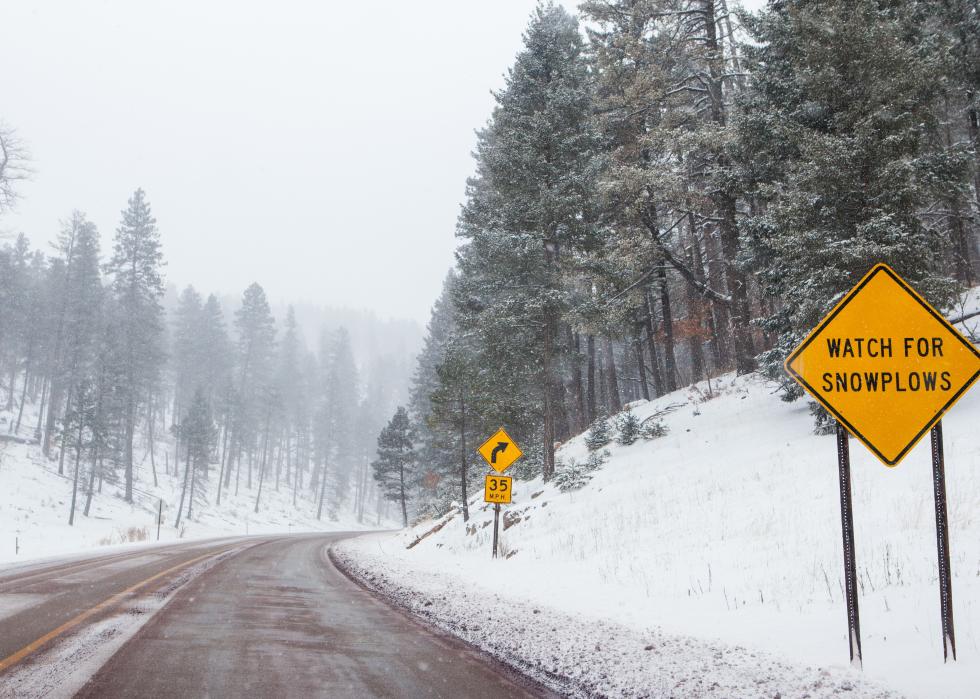
#4. Feb. 8-13, 1994
- Total damage: $6.3B
- Deaths: 9
- Regions most impacted: Southeast
An intense ice storm caused widespread damage throughout southeastern states. It started in the western area of the Southeast before spreading eastward to Tennessee and Alabama. More than 2 million lost power, according to Weather Underground. Some residents in Mississippi—where northern areas accumulated up to 6 inches of ice, according to the National Climatic Data Center—were without power for a month.
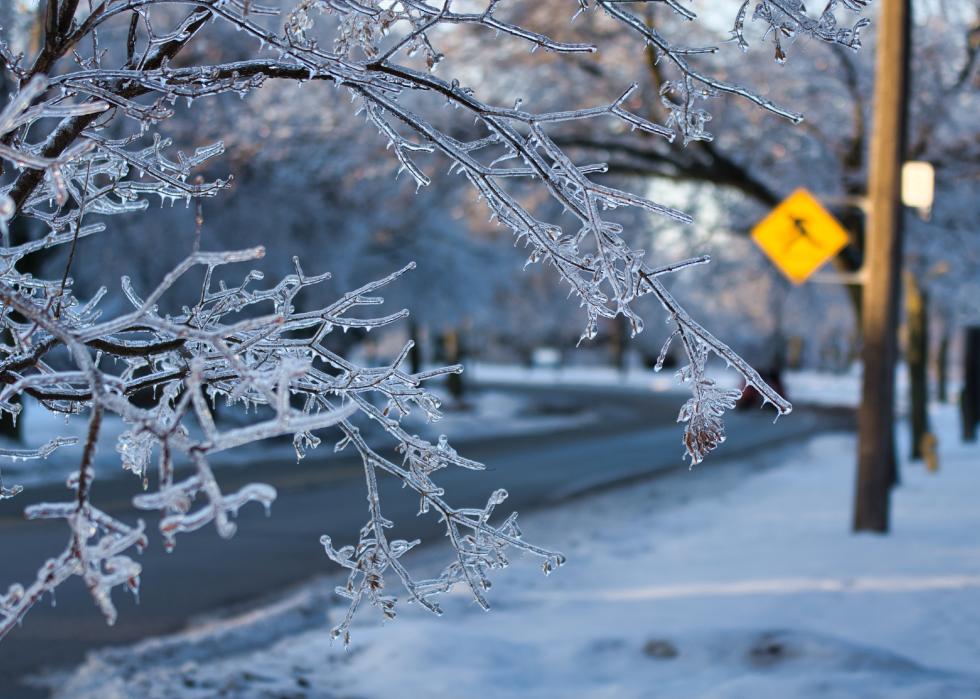
#3. Dec. 21-26, 2022
- Total damage: $8.7B
- Deaths: 87
- Regions most impacted: Most of the U.S.
Saint Nicholas wasn't the only one paying a visit during the holidays in 2022. Winter Storm Elliott, which transformed into a "bomb cyclone," was a cross-country storm that affected 3 in 5 American residents from Texas to Maine. More than a million customers went without power. Dozens died in and around Buffalo, New York, where near-hurricane force winds and continuous snow squalls devastated the residents, according to the Billion-Dollar Weather and Climate Disasters database.
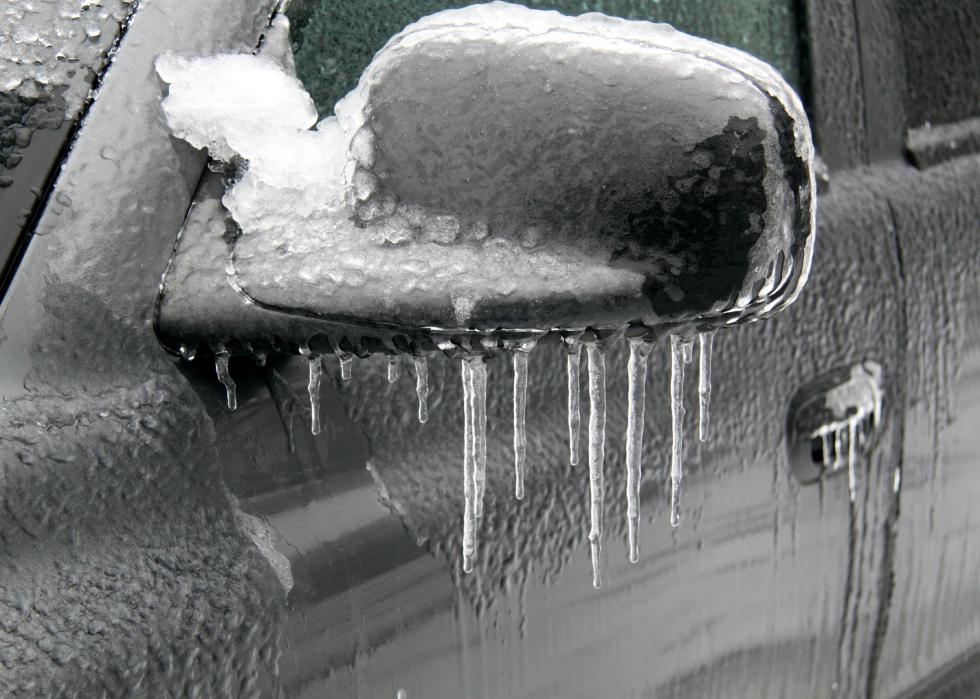
#2. March 11-14, 1993
- Total damage: $11.9B
- Deaths: 270
- Regions most impacted: Eastern U.S.
Affecting states along the East Coast from Florida to Maine, the "Storm of the Century" caused hurricane-force winds and delivered 2 to 4 feet of snow. Over 10 million households experienced power outages, and tornadoes across Florida devastated several communities, according to the Billion-Dollar Weather and Climate Disasters database.
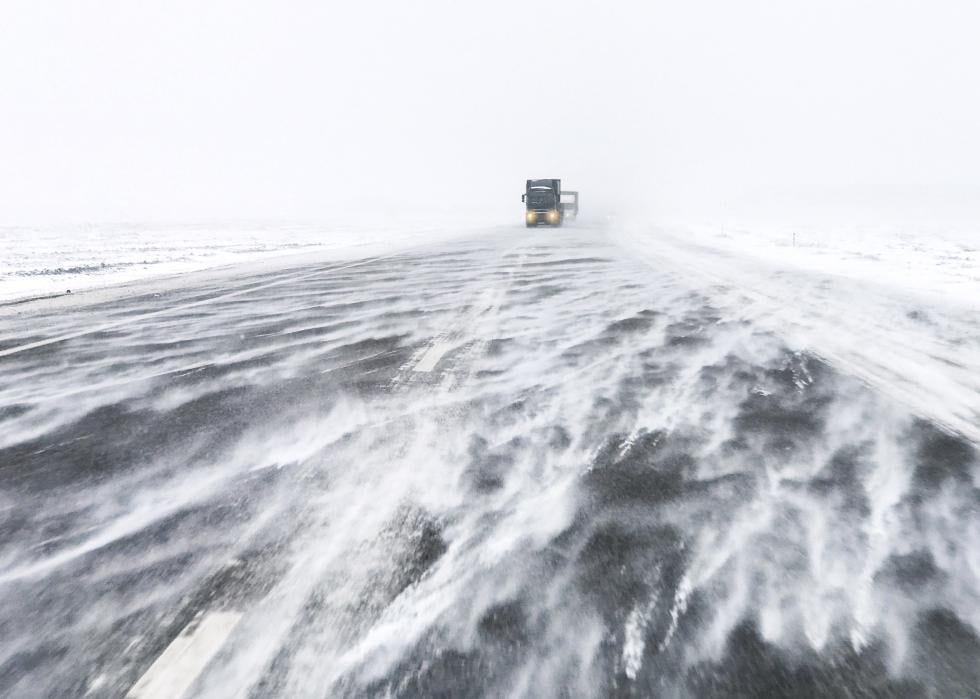
#1. Feb. 10-19, 2021
- Total damage: $26.5B
- Deaths: 262
- Regions most impacted: Southern Texas and Mississippi River Valley
Texans will remember the "Valentine's Week Winter Outbreak" for decades to come. The whole southern state was under a wind chill warning for the first time in history. Frozen equipment and increased demand crippled the Texas power grid, and it was later discovered that many Texas power plants had no winterization plans.
Story editing by Jeff Inglis. Copy editing by Paris Close.



